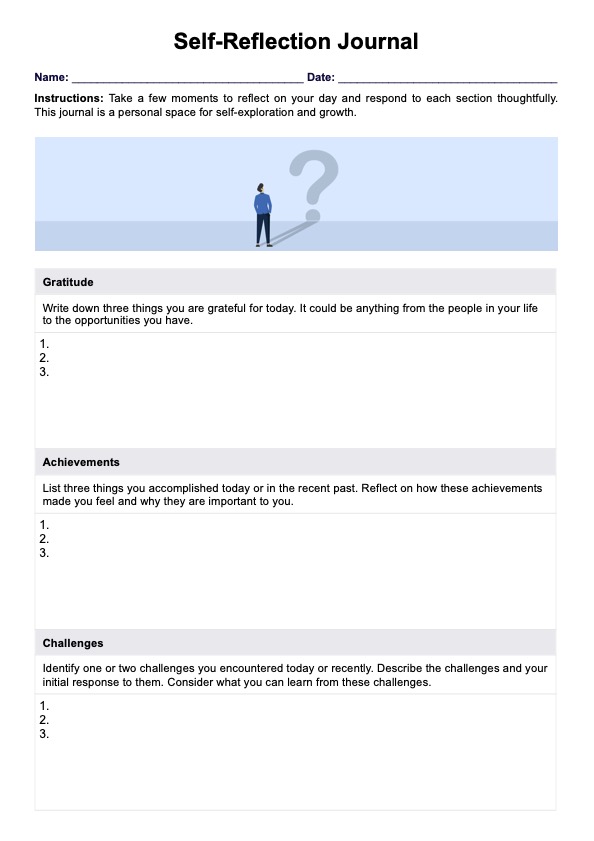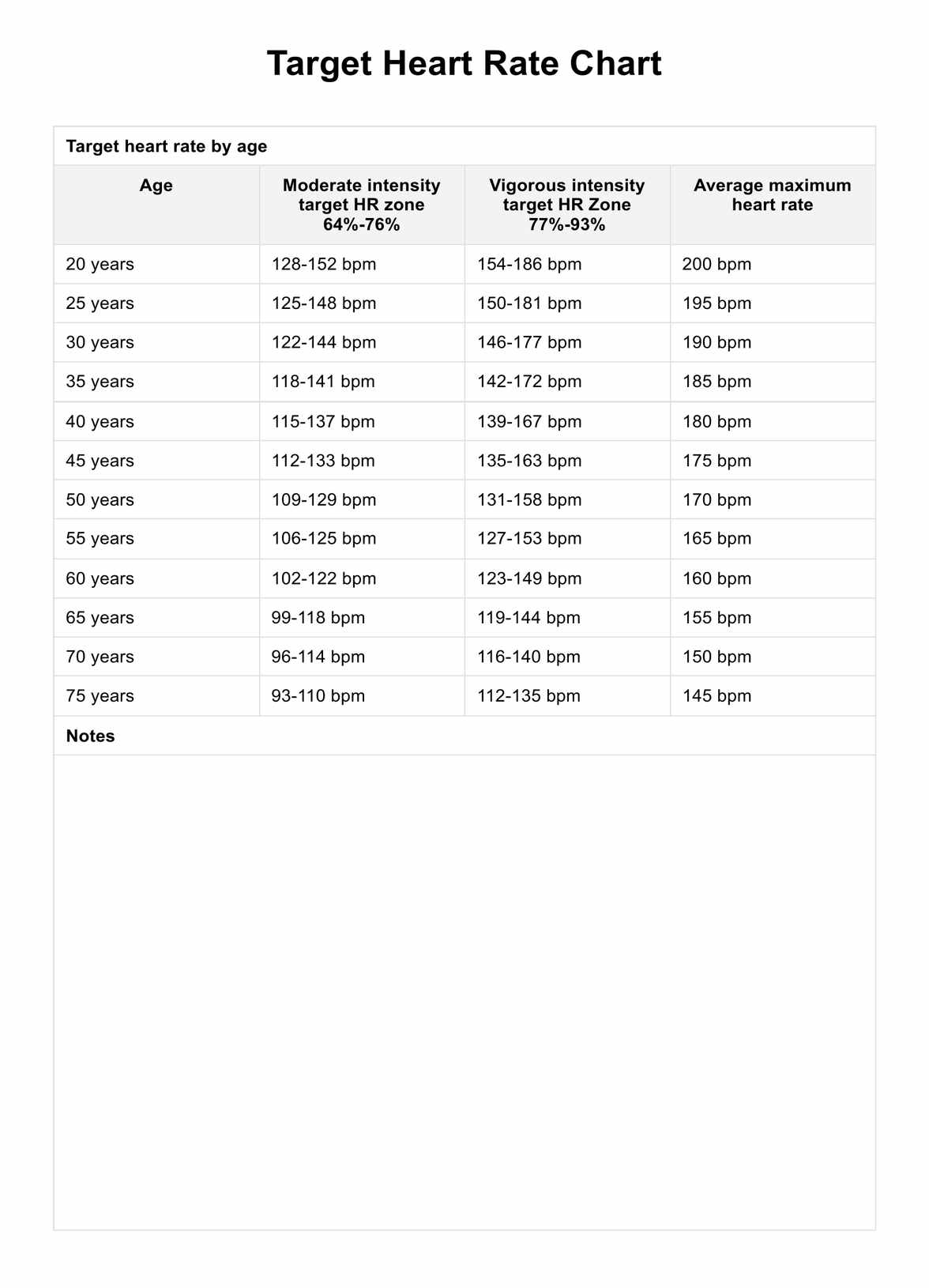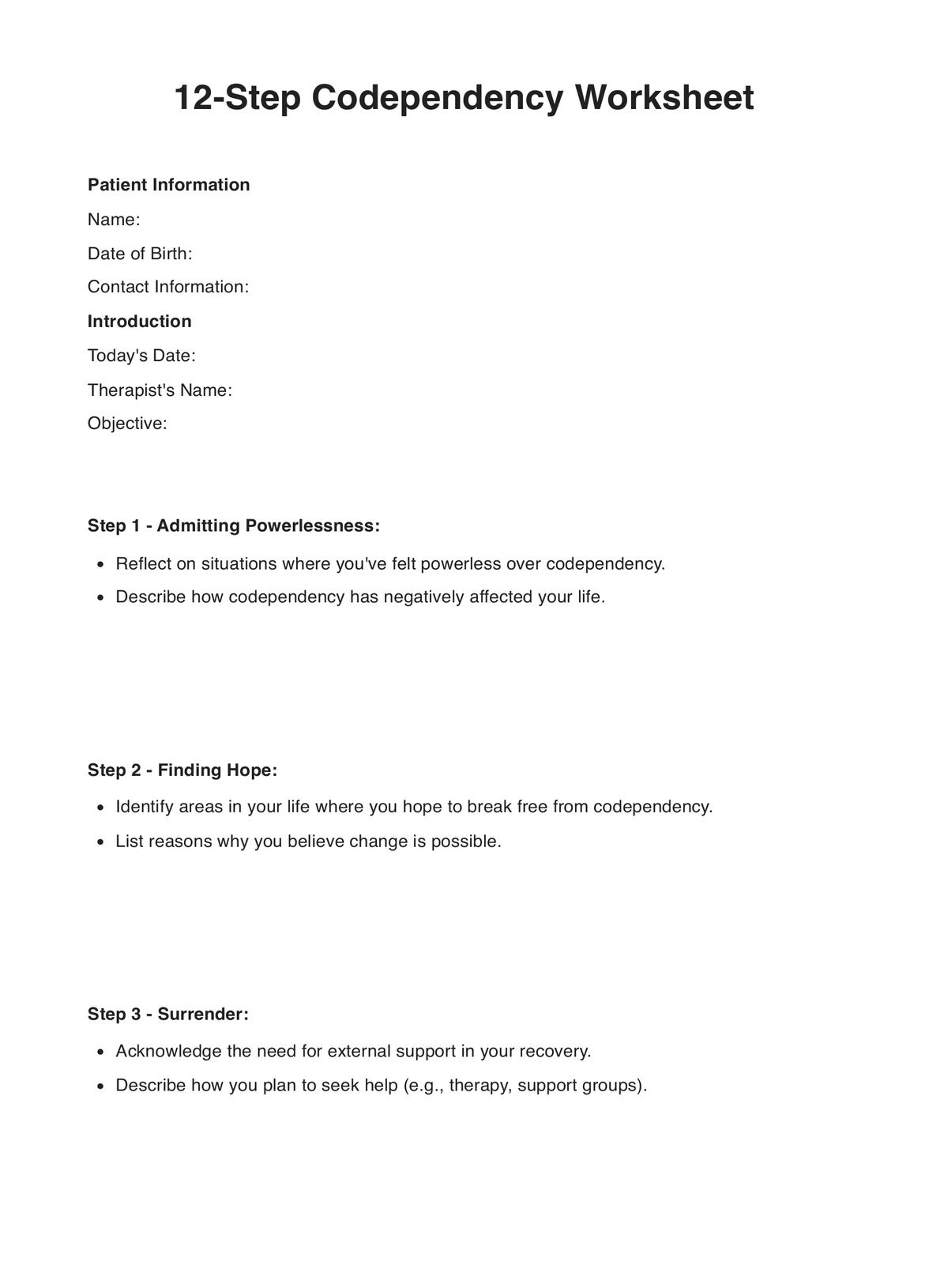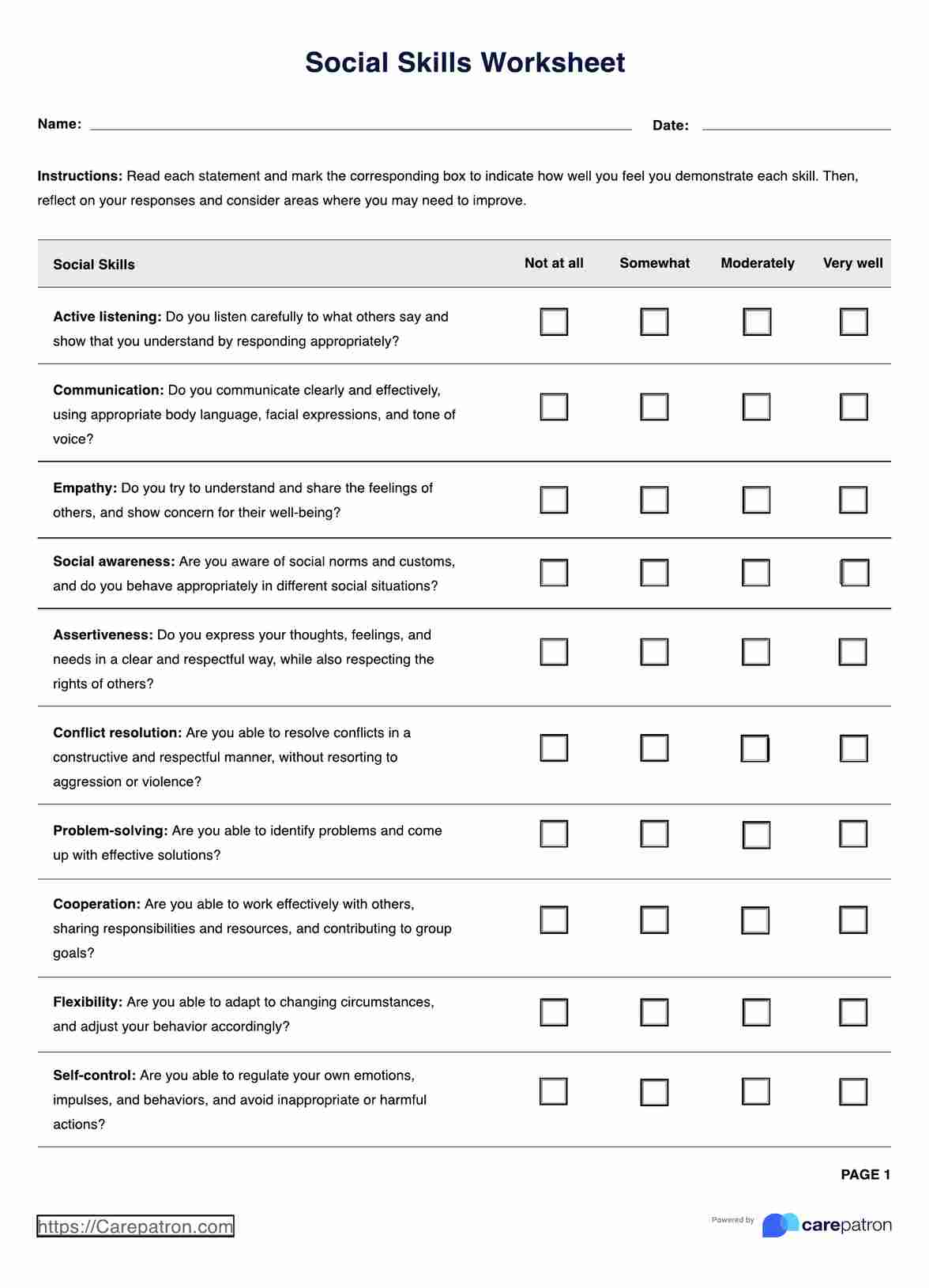Positive Thinking Worksheet PDF
Download Positive Thinking Worksheets to help clients counter negative thinking and navigate challenges with resilience.


Understanding positive thinking
Positive thinking, rooted in the science of positive psychology, focuses on cultivating a positive mindset to enhance mental health and life satisfaction. Key proponents include American psychologist Martin Seligman, who introduced the concept of learned optimism, and Barbara Fredrickson, known for her broaden-and-build theory emphasizing positive emotions.
The principles of positive psychology involve the intentional cultivation of positive emotions, engagement in meaningful activities, building positive relationships, discovering and utilizing personal strengths, and finding a sense of purpose and accomplishment.
Automatic thinking and cognitive restructuring
Addressing automatic thinking through cognitive restructuring is essential in fostering positive thinking and mental health. Automatic thinking is the stream of thoughts constantly flowing through our minds, often influenced by negative self-talk. This internal dialogue can shape our perceptions and emotional responses, impacting our overall outlook. Negative self-talk can lead to stress and hinder personal growth, as well as restrict positive self-talk and negatively impact self-esteem.
Cognitive restructuring involves consciously challenging and changing these automatic negative thoughts. It's a therapeutic process that aims to replace pessimistic perspectives with more positive and constructive ones.
By focusing on altering ingrained patterns, individuals develop the ability to respond differently to various situations. This restructuring empowers a person to break free from the cycle of negativity and cultivate a more positive outlook based on their own experiences.
Positive Thinking Worksheet PDF Template
Positive Thinking Worksheet PDF Example
How to use Positive Thinking Worksheet PDF
Positive thinking is a powerful tool for enhancing mental health and personal growth in clinical psychology. Follow these comprehensive steps to make the most of these printable worksheets:
Step 1: Access the template
Begin by accessing the printable Positive Thinking Worksheet template. You can click "Use template" to open it within the Carepatron platform or customize it. Alternatively, you can also click "Download" to get a fillable PDF.
Step 2: Identify negative thinking
Guide clients as they identify a recent negative thought or belief and acknowledge the impact of negative thinking on their emotions and relationships.
Step 3: Challenge negative thoughts
Let clients explore evidence that contradicts the negative thought. They should also consider alternative perspectives that offer a more balanced view of the situation and challenge the validity of negative beliefs.
Step 4: Reframe negative thoughts
Instruct clients to rephrase the identified negative thought into a more positive and empowering statement. Allow them to also identify positive aspects. Instruct them to list three positive aspects of the situation or themselves that they may have overlooked to embrace a mindset that appreciates strengths and acknowledges achievements.
Step 5: Set realistic goals
Encourage clients to establish small, achievable goals to work towards positive outcomes. Help them break down larger challenges into manageable tasks and celebrate each accomplishment to maintain motivation and progress.
Step 6: Practice gratitude
Ask clients to identify three things they are grateful for in their lives. Cultivating an attitude of gratitude can enhance their overall well-being and foster a more positive outlook on life. The worksheet also has fields for additional notes from the client and the practitioner for more insights.
Step 7: Repeat as needed
Advise clients to integrate these steps into their routine as an ongoing practice. Encourage them to regularly revisit the worksheet to reinforce positive thinking habits and navigate various aspects of life with a resilient mindset.
Tips for incorporating positive thinking into daily life
Here are some practical tips to help your clients infuse positivity into their daily routines:
Practice identifying positive aspects
Encourage clients to train their minds to recognize positive aspects in any situation. Guide them to focus on character strengths, achievements, or moments of gratitude in their own lives.
Use Positive Thinking Worksheets
Introduce clients to Positive Thinking Worksheets to develop a structured approach. Have them write down negative thoughts, challenge them, and reframe them as part of their self-care.
Reflect on daily experiences
Encourage clients to reflect on their day regularly. Help them identify positive moments or accomplishments and consider how to build on these experiences.
Write positive affirmations
Advise clients to write down positive affirmations daily. Guide them to focus on statements that empower and reinforce a positive self-image and encourage regular repetition for reinforcement.
Develop mindful responses
Teach clients to choose how to respond when faced with challenges consciously. Help them develop a habit of responding to difficulties with a positive and constructive mindset. Reading self-help books can improve their motivation and reduce the likelihood of developing mental illness.
Commonly asked questions
Positive Thinking Worksheets are crafted by designing structured forms with sections prompting users to identify negative thoughts, challenge them, reframe them positively, and engage in exercises that foster a positive mindset.
These are commonly utilized by individuals seeking to enhance their mental well-being, therapists guiding clients through cognitive restructuring, and anyone aiming to cultivate a more optimistic outlook on life.
Positive Thinking Worksheets are used at various times, including therapy sessions to address specific concerns, as part of daily routines for personal development, or during challenging periods to promote a positive mindset.


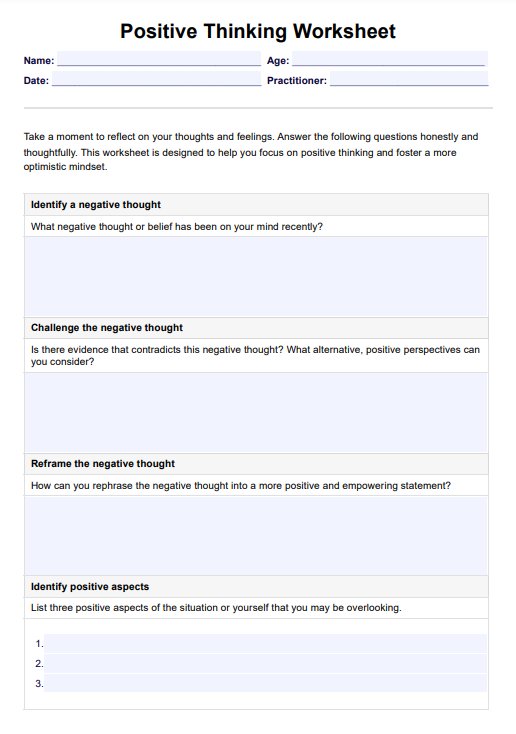
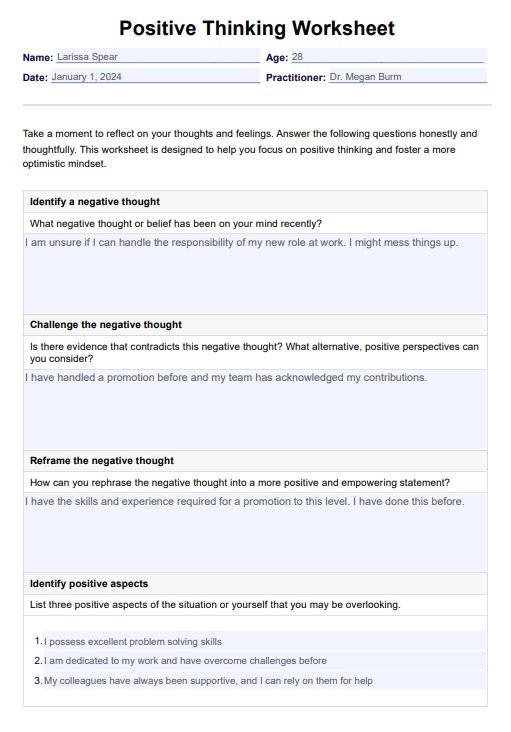

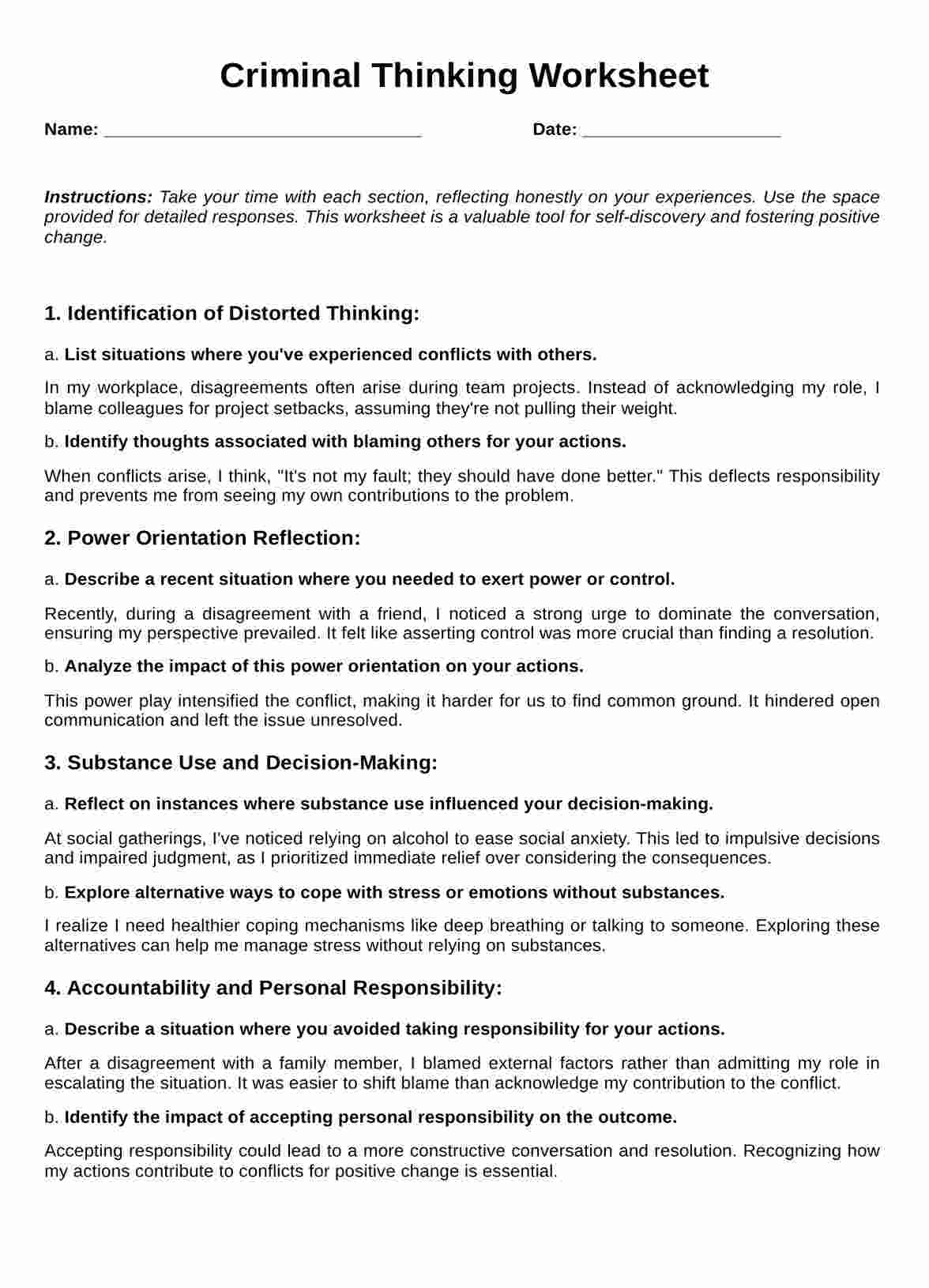













-template.jpg)






















































































